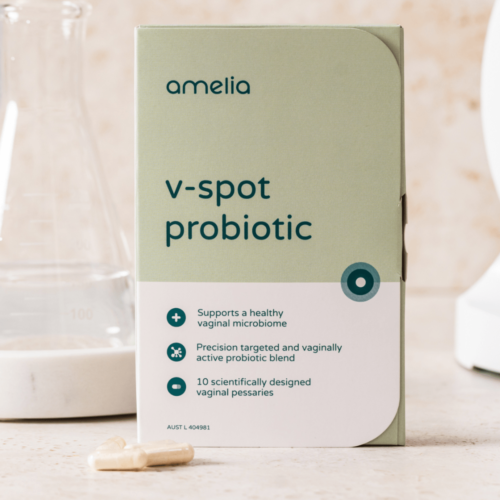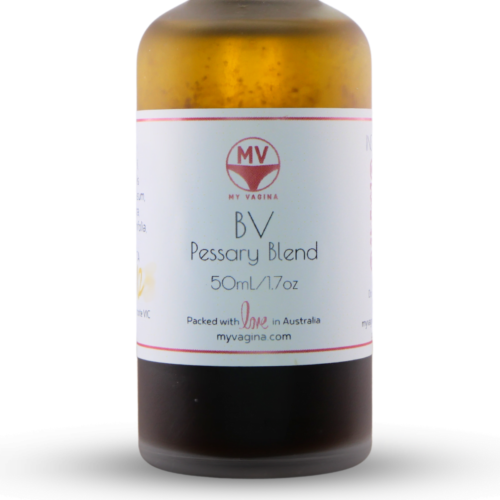PCR testing is a form of vaginal microbiome testing that can help determine the driving pathogens of bacterial vaginosis (BV), aerobic vaginitis (AV) or yeast infections. PCR tests are limited in that they are a preselected list of bacteria or fungi, and provide a yes or no answer.
The requesting physician will decide how broad the test should be, and labs usually have a panel that includes common BV, AV, yeast and healthy vaginal flora. Some panels contain extras, like sexually transmitted infections (STIs).
Other types of microbiome testing include Next-Generation Sequencing (NGS), which is much broader than PCR tests, and finds all microbial DNA in the sample.
Get a comprehensive vaginal microbiome test
What is a PCR test?
Polymerase chain reaction (PCR) testing is a form of microbial detection that looks for bacterial RNA and DNA. PCR testing can detect microbes that may be difficult to culture.
The equipment these special labs use to do these tests are capable of many tests at the same time.
The vaginal microbiome panel
Lactobacilli panel (healthy flora)
- Lactobacillus (tests for L. crispatus, L. jensenii, L. gasseri, L. iners)
Important note on L. iners:
L. iners can be a predictor of an unstable vaginal microbiome, not a sign of a recovering vagina. Do not trust L. iners! This lactobacillus is a shapeshifter.
BV / AV / UTI panel
- Atopobium vaginae (hard to culture, fastidious bacteria, associated with BV, some strains metronidazole resistant, creates biofilms/contributes to biofilms)
- Bacteroides spp. (strongly correlated with BV, can cause ammonia odour)
- Dialister spp. (relatively low virulence)
- Enterococcus faecalis (normal in bowel flora, can be cause of abnormal vaginal flora and faecal odour from vagina, very hardy, very antibiotic resistant, creates biofilms)
- Escherichia coli (normal in bowel flora, cause of UTIs and abnormal vaginal flora, can contribute to BV/aerobic vaginitis with odour and discharge, creates biofilms)
- Eggerthella sp. (relatively low virulence)
- Fusobacterium nucleatum
- Gardnerella vaginalis (potential STI, directly involved in BV, causes fishy odour, watery discharge, creates thick biofilms)
- Group B Streptococcus (GBS) (can be involved in abnormal flora, controversial as to involvement in BV or vaginitis, creates biofilms)
- Leptotrichia amnioni
- Mobiluncus curtisii (possibly involved in BV, antibiotic-resistant, creates/contributes to biofilms)
- Mobiluncus mulieris (possibly involved in BV, antibiotic-resistant, creates/contributes to biofilms)
- Megasphaera species (type 1 and type 2, may be new species, normally present, associated with BV, type 1 worst, PCR test only)
- Mycoplasma genitalium (possibly involved in BV, antibiotic-resistant. creates biofilms)
- Staphylococcus aureus and MRSA (fishy/foul odour, vulvovaginitis, discharge, itch, small pimples/boils, transmissible, antibiotic-resistant, causes biofilms)
- Ureaplasma urealyticum (may be involved in BV and abnormal flora, antibiotic-resistant, creates biofilms)
- Ureaplasma parvum (may be involved in BV and abnormal flora, antibiotic-resistant, creates biofilms)
- BV-associated bacterium (BVAB-1, BVAB-2 and BVAB-3) (novel bacteria in the Clostridiales Order highly specific for BV, relatively low virulence)
- Sneathia amnii and Sneathia sanguinegens (formerly Leptotrichia sanguinegens) (heavily related to BV, not found in healthy vaginas, cause of BV, thick biofilms, very adherent)
Yeasts
- Candida albicans (common yeast, can overgrow causing yeast infections with itching, thick cottage cheese discharge, treated with antifungals, responds to boric acid, develops biofilms)
- Candida glabrata (less severe symptoms than C. albicans, burns, very antifungal resistant, responds to boric acid, causes biofilms)
- Candida parapsilosis (Similar or the same as other yeast infections, discharge, may cause UTIs, itch, burning, pain after sex, stinging, antifungal resistant, develops biofilms)
- Candida tropicalis (Similar or the same as other yeast infections, itch, burning, pain after sex, stinging, fluconazole-resistant, develops biofilms)
STI panel
- Chlamydia trachomatis – chlamydia (STI, causes discharge, urinary tract symptoms, antibiotic-resistant strains appearing, creates biofilms)
- Herpes simplex virus types 1 and 2 – genital herpes virus (STI, causes genital sores, flu-like symptoms, no odour, no discharge, may utilise other species’ biofilms to hide in)
- Neisseria gonorrhoeae – gonorrhoea (STI, maybe no symptoms, discharge, burning urination, foul odour, treated with antibiotics, some strains antibiotic-resistant, creates biofilm)
- Trichomonas vaginalis – trich (STI, causes fishy odour and abnormal discharge, usually one of first BV tests)
- Human papillomavirus – HPV (is linked with vaginal dysbiosis)
- Treponema pallidum – syphilis (STI)
Other bacteria, fungi and viruses
- Epstein-Barr virus (EBV) (vulvar ulcers, urinary tract symptoms, vulvar pain, itching, discharge)
- Haemophilus ducreyi (cause of painful genital sores/ulcers)
- Haemophilus influenzae (discharge, itch, antibiotic-resistant, often found in children from nose picking-crotch itching, antibiotic resistance developing)
- Human adenovirus (can cause urethritis, genital sores that look like herpes)
- Neisseria meningitidis (vaginal bleeding, discharge, urethral symptoms, vulvovaginitis, irritation, inflammation, antibiotic resistance developing)
- Streptococcus pneumoniae (serious infection in the respiratory tract, can cause pelvic organ infection)
- Helicobacter pylori (maybe STI, possibly associated with BV or vulvovaginal infections)
What to know about these bacteria
Many of these bacteria are antibiotic-resistant and do not appear on cultures, being slow-growing or otherwise difficult to culture.
References
- J Clin Microbiol. 2016 June 24; 54(7): 1930. Development and Validation of a Highly Accurate Quantitative Real-Time PCR Assay for Diagnosis of Bacterial Vaginosis, David W. Hilbert, William L. Smith, and Scott E. Gygax
- J Clin Microbiol.2012 Jul;50(7):2321-9. doi: 10.1128/JCM.00506-12. Epub 2012 Apr 25. Development and validation of a semiquantitative, assay for diagnosis of bacterial vaginosis. Cartwright CP, Lembke BD, Ramachandran K, Body BA, Nye MB, Rivers CA, Schwebke JR
- J Clin Microbiol.2010 May;48(5):1812-9. doi: 10.1128/JCM.00851-09. Epub 2010 Mar 19. Quantitative PCR assessments of bacterial species in women with and without bacterial vaginosis. Zozaya-Hinchliffe M, Lillis R, Martin DH, Ferris MJ
- Appl Environ Microbiol. 2013 Jul; 79(13): 4181–4185. Novel PCR-Based Methods Enhance Characterization of Vaginal Microbiota in a Bacterial Vaginosis Patient before and after Treatment doi: 10.1128/AEM.01160-13 Janet A. Lambert, Apoorv Kalra, Cristina T. Dodge, Susan John, Jack D. Sobel, and Robert A. Akins
- Twin, J., Bradshaw, C. S., Garland, S. M., Fairley, C. K., Fethers, K., & Tabrizi, S. N. (2013). The potential of metatranscriptomics for identifying screening targets for bacterial vaginosis. PLoS One, 8(9)
- Sex Transm Infect 2013;89:A88. Evaluation of a Real-Time PCR-Based Test For Bacterial Vaginosis, J. G. Kusters, E. A. Reuland, and J. W. Dorigo-Zetsma
- J Clin Microbiol. 2014 August; 52(8): 3137. Changes in Vaginal Bacterial Concentrations with Intravaginal Metronidazole Therapy for Bacterial Vaginosis as Assessed by Quantitative PCR David N. Fredricks, Tina L. Fiedler, and Jeanne M. Marrazzo
- Srinivasan S, Hoffman NG, Morgan MT, et al. Bacterial Communities in Women with Bacterial Vaginosis: High Resolution Phylogenetic Analyses Reveal Relationships of Microbiota to Clinical Criteria. Ratner AJ, ed. PLoS ONE. 2012;7(6):e37818. doi:10.1371/journal.pone.0037818.
Specially formulated probiotic for vaginal application to promote a healthy vaginal microbiome.
Unique, comprehensive BV, AV and 'mystery bad vag' treatment guide, one-of-a-kind system, with effective, innovative treatments.






